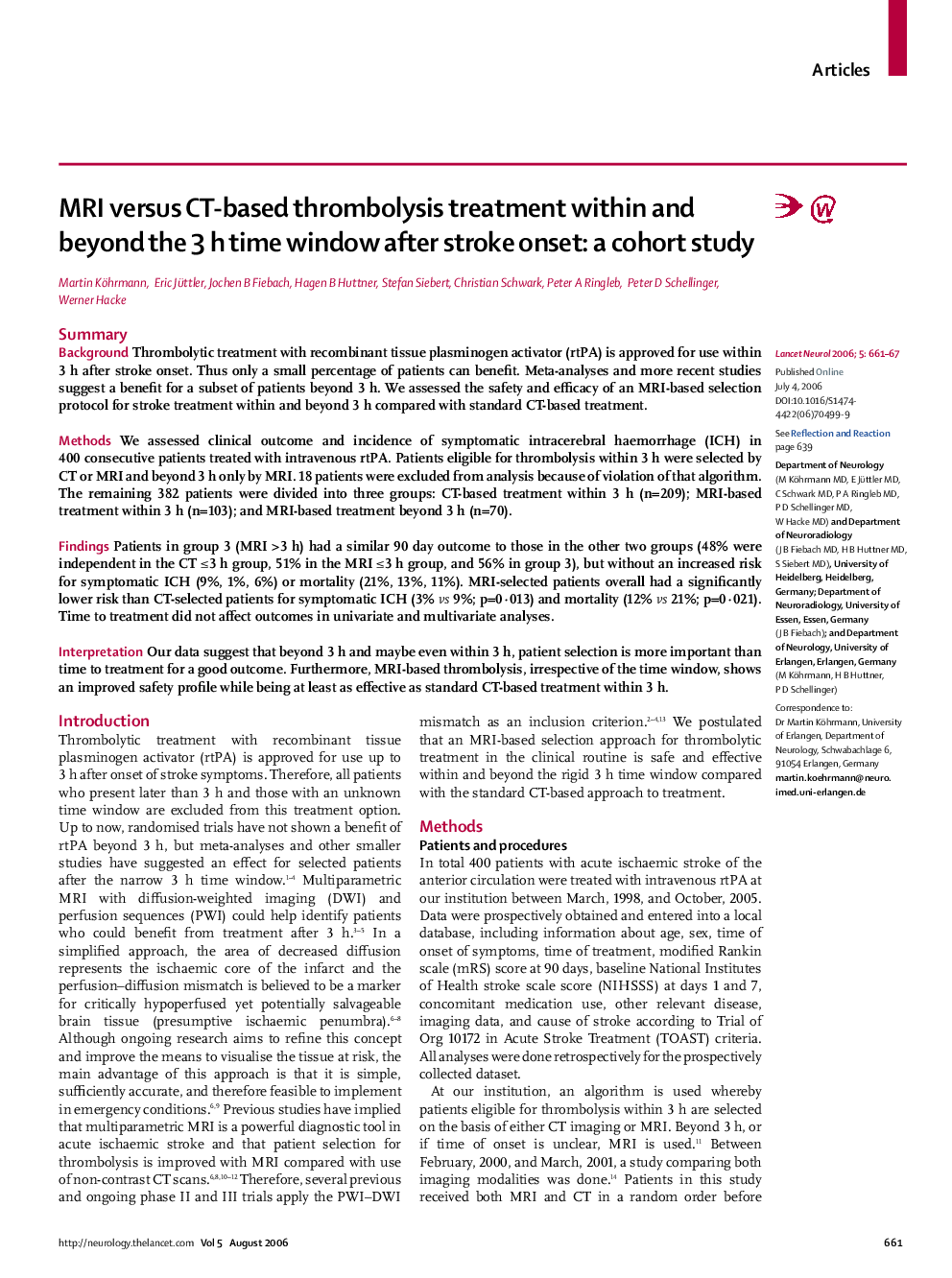| Article ID | Journal | Published Year | Pages | File Type |
|---|---|---|---|---|
| 3067602 | The Lancet Neurology | 2006 | 7 Pages |
SummaryBackgroundThrombolytic treatment with recombinant tissue plasminogen activator (rtPA) is approved for use within 3 h after stroke onset. Thus only a small percentage of patients can benefit. Meta-analyses and more recent studies suggest a benefit for a subset of patients beyond 3 h. We assessed the safety and efficacy of an MRI-based selection protocol for stroke treatment within and beyond 3 h compared with standard CT-based treatment.MethodsWe assessed clinical outcome and incidence of symptomatic intracerebral haemorrhage (ICH) in 400 consecutive patients treated with intravenous rtPA. Patients eligible for thrombolysis within 3 h were selected by CT or MRI and beyond 3 h only by MRI. 18 patients were excluded from analysis because of violation of that algorithm. The remaining 382 patients were divided into three groups: CT-based treatment within 3 h (n=209); MRI-based treatment within 3 h (n=103); and MRI-based treatment beyond 3 h (n=70).FindingsPatients in group 3 (MRI >3 h) had a similar 90 day outcome to those in the other two groups (48% were independent in the CT ≤ 3 h group, 51% in the MRI ≤ 3 h group, and 56% in group 3), but without an increased risk for symptomatic ICH (9%, 1%, 6%) or mortality (21%, 13%, 11%). MRI-selected patients overall had a significantly lower risk than CT-selected patients for symptomatic ICH (3% vs 9%; p=0·013) and mortality (12% vs 21%; p=0·021). Time to treatment did not affect outcomes in univariate and multivariate analyses.InterpretationOur data suggest that beyond 3 h and maybe even within 3 h, patient selection is more important than time to treatment for a good outcome. Furthermore, MRI-based thrombolysis, irrespective of the time window, shows an improved safety profile while being at least as effective as standard CT-based treatment within 3 h.
